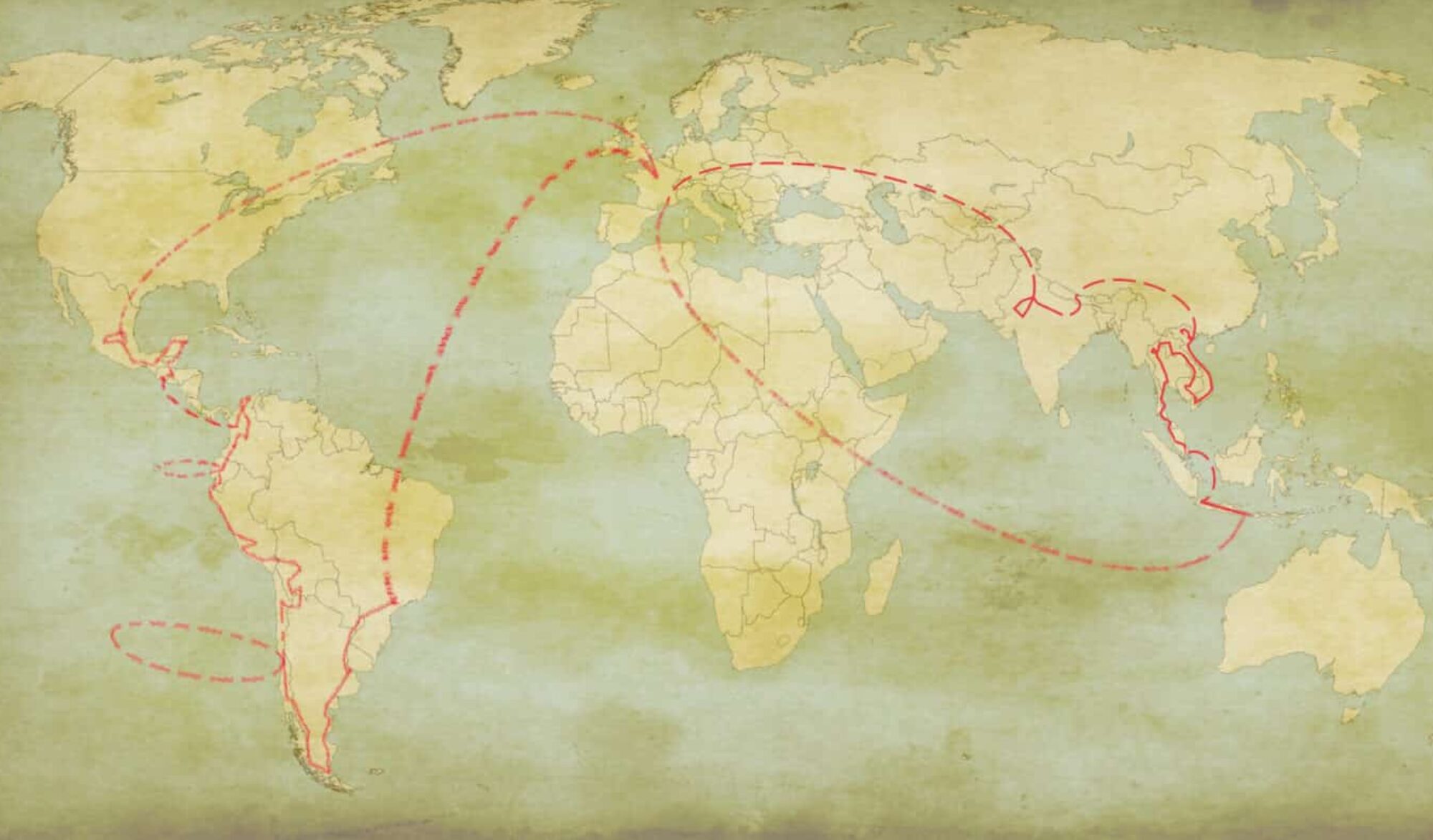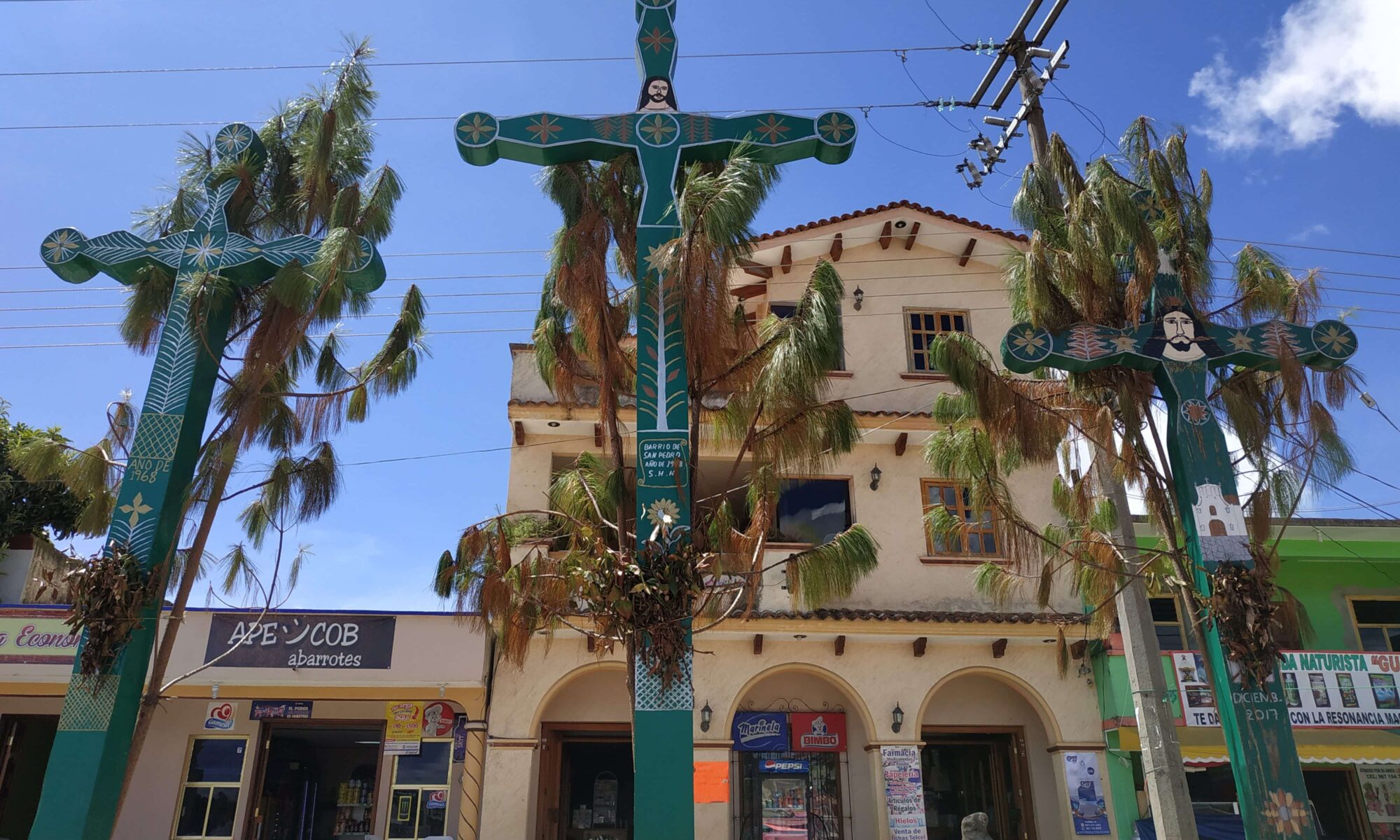Following our exploration of the southeast of Mexico, we moved towards the rest of the country. That is how we reached one of its most southern states: Chiapas. After a lot of bumpy roads, we stopped in San Cristobal de la Casas, the main city in the region. It is the perfect base to explore the area.
How to arrive to San Cristobal de la Casas
San Cristobal de las Casas is the capital of Chiapas, one of Mexico’s poorest states. The roads to get there are full of potholes and curves. For Caroline, who gets sick quite easily, it was a very long journey.
One of the best way to get to San Cristobal de la Casas is to get a colectivo. It is the mean of transportation that locals use the most. Colectivos are small vans that don’t actually follow a schedule. They depart as soon as they are full, as some kinds of shared taxi. They are less comfortable than the usual buses, but so much cheaper!
On the road, you might see people stretching a rope across the road, as if they want to stop cars from passing. Colectivos‘ drivers don’t slow at all and it just seems that the vehicle is going to drag the rope and the people holding it, but they let go of it at the very last second. It is quite impressive when you see it for the first time.
The goal of these people is to slow down or stop the vehicles passing by so that they can sell them chips, fruits or handicrafts. One of the driver told us that it is best not to buy from them as there is actually a whole criminal activity behind it. A lot of time, there are only kids holding the rope and buying from them will just give more incentive to the exploiters behind to keep them away from school and education.
Discovering San Cristobal de la Casas
San Cristobal de las Casas is not a big city, but it has a busy life. As we walked around, we passed through the zocalo (the main square) and then we arrived in the street of Guadalupe. The street is quite colorful and filled with shops and people walking around. It has a bit of a hippie touch, with street musicians and many vegetarian restaurants. At the end of the street, on top of a flight of stairs, you can find the iglesia de Guadalupe. The church, all in white and yellow like the stairs to reach it, is quite nice. But mostly, you go up there for the really nice panorama of the city.
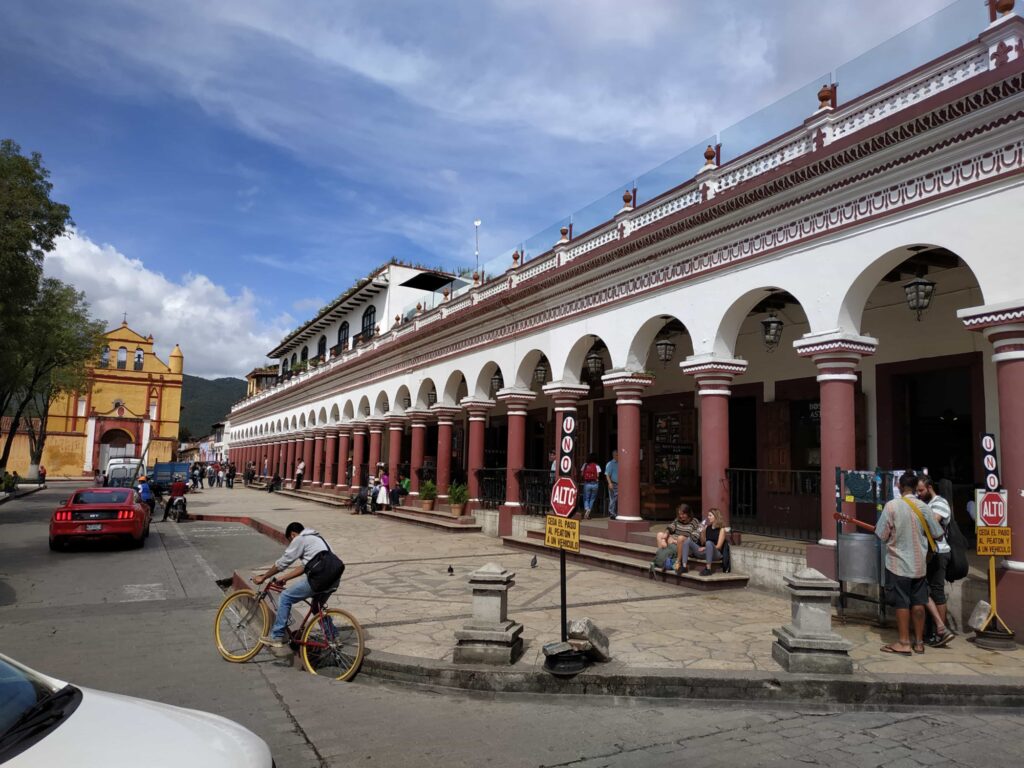
San Cristobal de la Casas is quite high in altitude. At around 2000 m, it can get quite chilly in the evening. Of course, this gives you the perfect excuse to try the churros con chocolate. The hot chocolate of San Cristobal de la Casas is quite famous. Cooked with water and a lot of spice like clove, cardamom and cinnamon, it is quite warm and delicious.
San Cristobal de las Casas is also famous for its amber. There is a museum dedicated to it (although we didn’t visit it) and a lot of shops selling amber jewelry. We discovered that insects trapped in amber are extremely rare: guess that cloning dinosaurs would require a lot of luck!
The Zapatista uprising
While in San Cristobal de la Casas, we decided to explore the surrounding area. We had heard about a rebel village, Oventic, not far away.
Since 1994, part of the indigenous population, the Zapatista Army of National Liberation has rised against the power in place to claim the autonomy of the indigenous populations and fight for their interests. Already in a poor region, nutrition and illiteracy problems were even more important among the indigenous population. Moreover, the land was in the hands of a few landlords.
In this situation, the Zapatista’s army was born. They created their own self-managed villages, giving power to the people and refusing any governmental intervention. They also provided basic services like hospitals and schools. But the government never recognized their legitimacy.
Oventic is one of this rebellious villages, ruled by the people. We decided to pay it a visit and try to get a glimpse of the life in an autonomous village.
Visiting Oventic: the free village
To get there, we had the choice between a taxi and a colectivo. The taxi will get you there faster and you can even negotiate with the driver to wait for you during your visit so you don’t have to wait to come back. But it is, of course, more expensive than the colectivo. The taxi could still be a good idea if you find other travelers to share the cost. In the end, we preferred to go with the locals as we were not in a hurry.
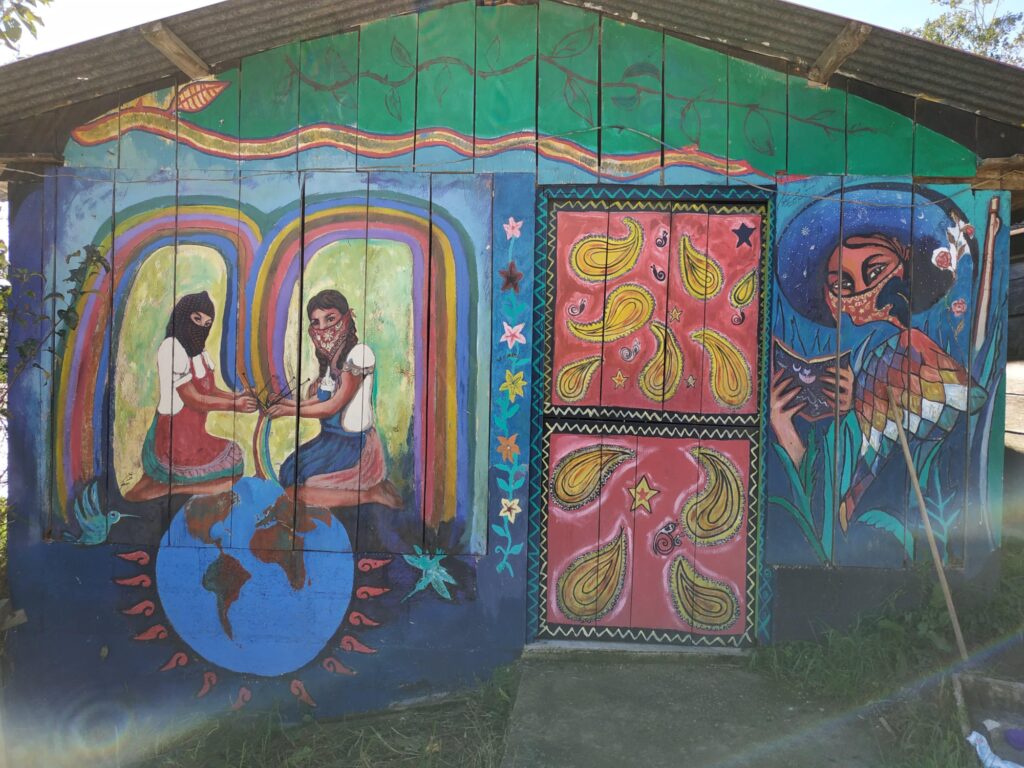
The colectivo left us at the entrance of Oventic. We found a closed gate guarded by two hooded women. After a few minutes, a hooded man arrived and asked us to sign a paper stating that we didn’t have bad intentions toward the Zapatista movement. He then made sure that we understood we couldn’t take any photos of people faces and of the cars’ licence plates. After that warning, he allowed us in the village. All the people we saw were wearing a hood as they make it a priority to protect their identity.
Our “guide” showed us around the village, although he did not give any explanation and replied to pretty much none of our questions. Language was the true barrier: he spoke mainly one of the Mayan languages still alive in the region and little Spanish. Even though it was quite hard to talk with anyone, the village is really worth a stop. All the buildings are decorated with beautiful painting representing their rebellious lifestyle. We also read that other tourists got luckier with the guided part of the tour and got much more information out of it.
Traditions of San Juan Chamula
The village of San Juan Chamula is famous for its traditions a bit out of the ordinary. After our visit of Oventic, we decided to go with a guided tour. We wanted to make sure to get the whole story of the Tzotzile community that lives there. When choosing for one, we always try to choose one that will benefit the local populations, which we found at our hostel.
The cemetery
The visit starts in the cemetery. It is especially important for the community around Dia de muertos. We were there only a few days before the famous celebration and we could see the families decorating the graves with flowers, branches, and pine needles. The branches recall the foliated cross, a Mayan symbol of the tree of life. In the cemetery, there are no tombstones, only small wooden crosses. The guide explained that the locals are buried with their nicest traditional outfit and favorite items. Often nowadays that means a smartphone. But what really surprised us is the bottle of Coca-Cola they are also buried with. Nobody in the world drinks as much Coca-Cola as the people of Chiapas: an average of 800 liters per person per year (which comes with some health issues). But that is not the only reason to be buried with it, as we discovered soon after.
The cult of the saints
We then went to the house of a member of the community where an altar dedicated to a saint was erected. The space was divided into three areas: the exterior, interior, and the sacred part, divided by the other two by a wall made of tree branches and a roof of naranjillo, a local plant. Pine needles were decorating the floor in front of it and other plants and branches were used to adorn the walls. These divisions in three is a commonality between the Catholics (the Holy Trinity) and the Maya, for which three worlds existed: ours, the gods’, and the underworld.
We learned that each male of the community needs to give one year of his life in service to society. During that year, he is the guardian of one of the city’s patron saint and he cannot work as he needs to take care of the saint full time. Hence, he becomes the mayordomo, which literally means the butler. At first we thought that he only had to participate in some celebrations, but he actually has to pray and turn on candles four times per day in front of the saint’s altar, welcome the worshipers, and change the pine needles on the floor every other day.
As we said, the mayordomo doesn’t have time to work, but he has to pay for everything : from the candles, the parties, the offerings, up to the porters when the Saint goes out for the celebrations. Since the year ends up being quite expensive, a lot of men in the community tend to go to work in the USA for some time to save enough money before coming back to give back to the community. By working abroad some of them are even able to build magnificent houses.
The church of San Juan Chamula
On the way to the church, we passed by the main square where the community holds assembly. The assembly takes important decision for the community and solve any issue, acting as a tribunal. It also decides on which men will be the next mayordomo, among the volunteers. The waiting list to become one might be ten years long! If the men who asked this honor dies while waiting, it’s up to his son, aided by the rest of the family, to take his place.
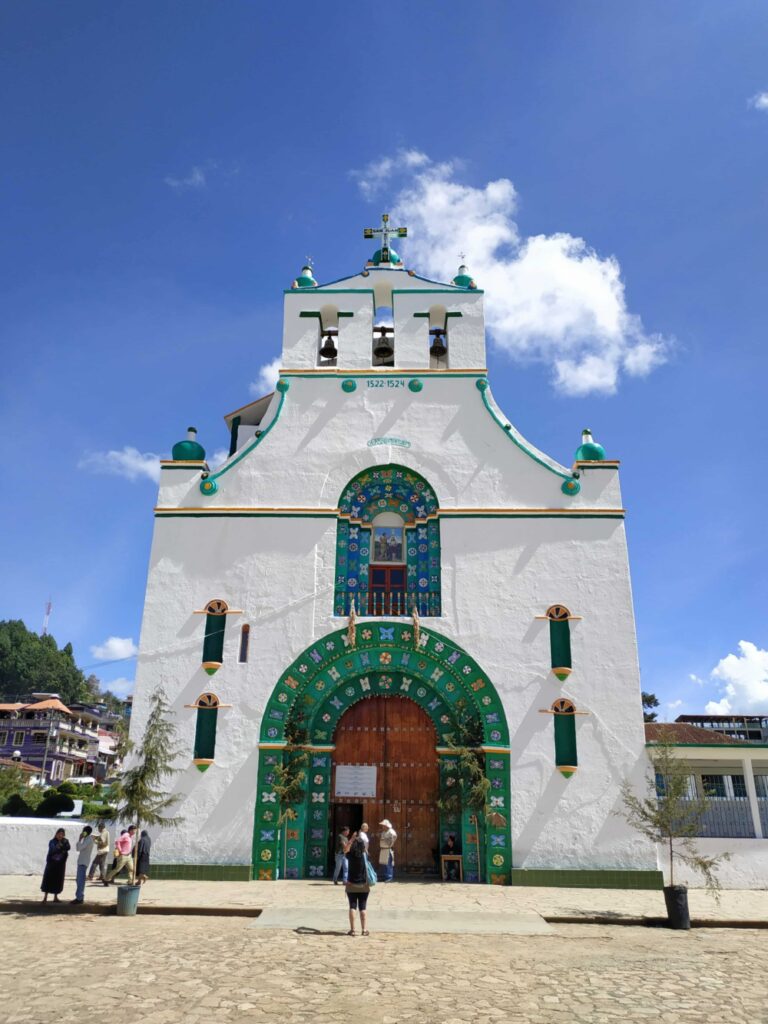
Looking at the church, you might notice a sign on top of it, stating that the construction took place between 1522 and 1524. According to our guide, it is quite unlikely, as that would mean that the building was completed only two years after the Spanish settled on the continent.
Inside the church, it is forbidden to take photos. Here as well, the floor is full of pine needles. There are no benches, and the representations of the patron saints of the different part of the city decorate the walls.
Even though the community is technically Catholic, they still practice some shamanic rituals. We saw small groups of people seated on the floor with colorful candles in front of them. Each group had a curandero (a healer) that lights the colorful candles, prays and purify the faithfuls. We learned that the color of the candles represents something specific (love, health, family). Each group also had offerings like a chicken, eggs, or some Coca-Cola, necessary to perform the rituals. While chanting a monotonous song, the curandero pass the offerings on the sick part of the believer. Big puffs are used at the same time to banish evil. For a similar reason, burping, even when caused by Coca-Cola, is another way to expel evil from the body. And that is why the beverage find its place also during the burial ceremonies.
The catholic priests actually enter this church only on one occasion: baptisms. This is the only catholic sacrament taken by the community. The guide told us that other villages in the valleys around also follow their own rituals, although San Juan Chamula has probably the most peculiar ones.
Discovering the handicraft of Zinacantan
Before coming back to San Cristobal de la Casas, the tour included one more stop in another indigenous village: Zinacantan. The village shares some traditions with San Juan Chamula. But we mostly came here to discover the work of the village’s renown weavers. We were welcomed in the house of a local family. They still use the traditional weaving techniques to create colorful skirts, shirts, and belt.
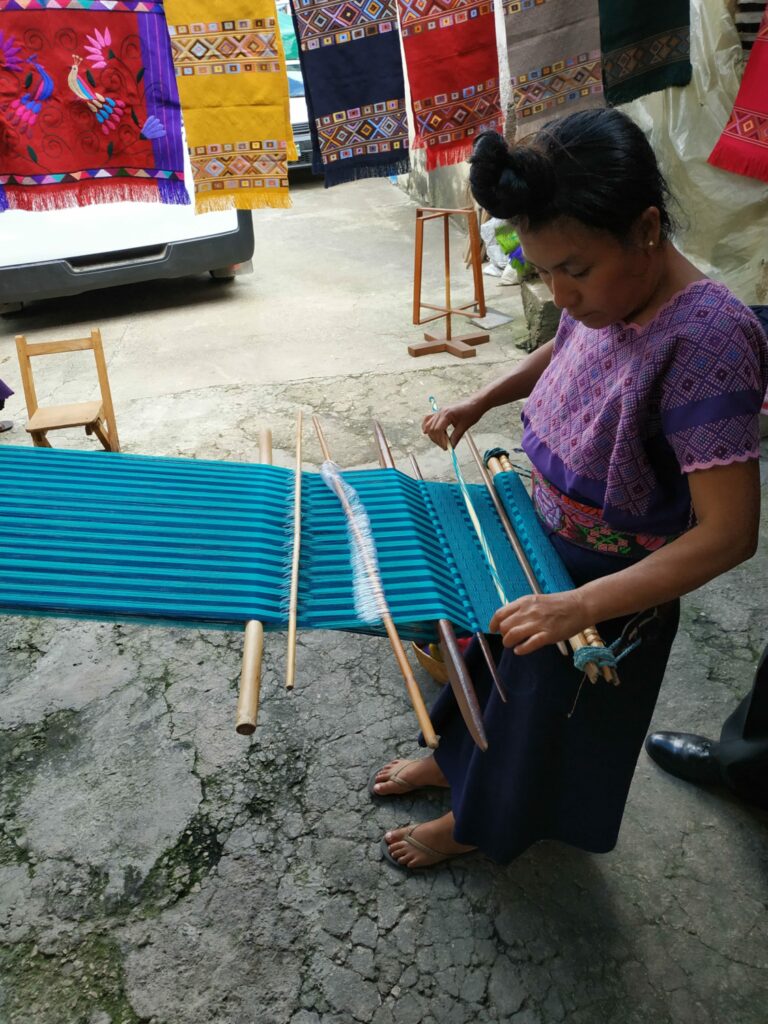
Every woman has to even weave their own wedding dress. We finished the visit with some homemade tacos filled with pumpkin seed and lightly spiced, called pipián. To go with it, they also served us some posh, a traditional alcoholic drink. It is usually quite strong, but they added some cinnamon flavor and we found it quite delicious.
To not miss any of our adventure, subscribe to our newsletter!
